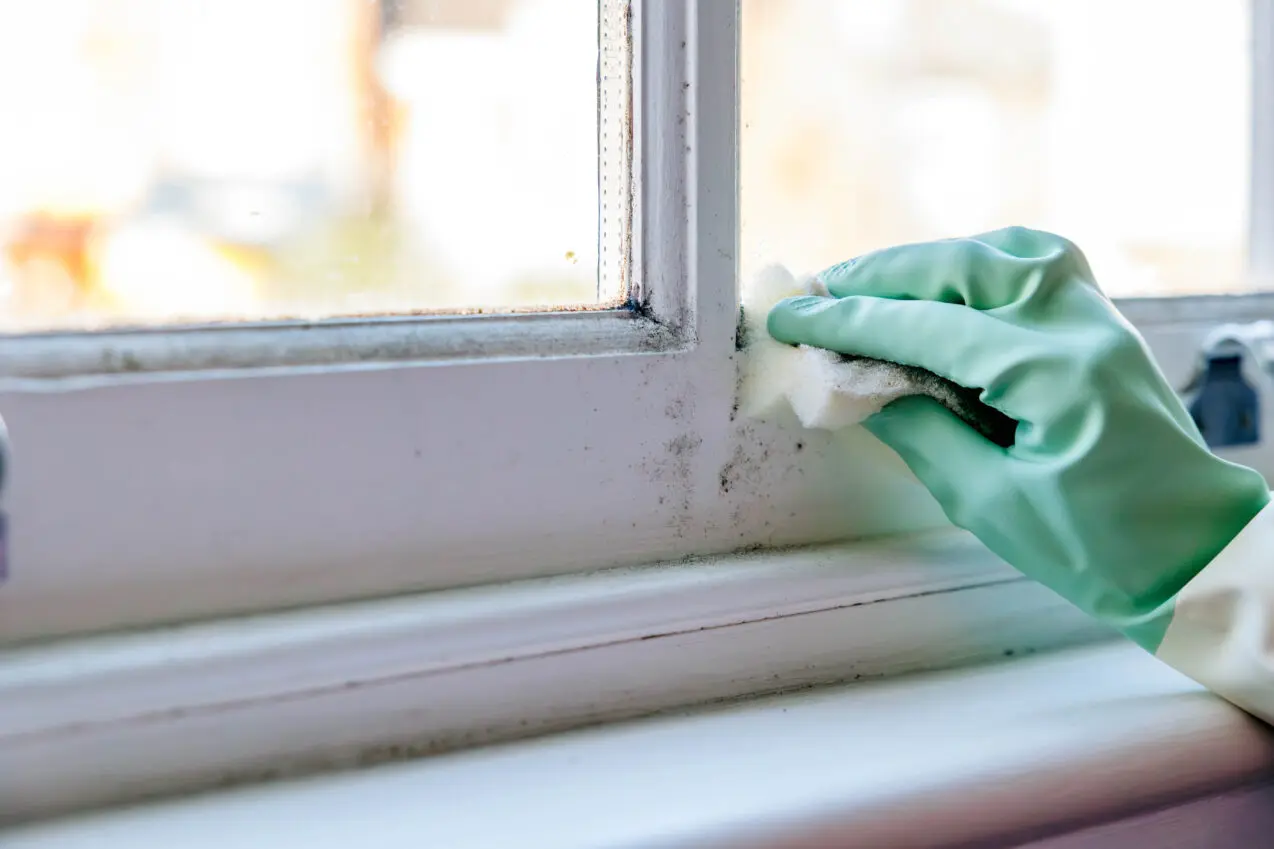As residents return to their homes following the devastation of Hurricanes Helene and Milton in the Southeast, health officials warn of a lurking threat that could impact their well-being: mold. The fungal growth, which can begin within 24 to 48 hours of water exposure, presents various health risks that range from respiratory issues to potential long-term health complications.
"Mold is not necessarily going to kill you in 24 hours, but it certainly can have a pretty significant impact on your quality of life and on the health of your internal organs," said Jae Williams, director of communications for the Florida Department of Health.
The presence of mold in homes has been linked to the development and exacerbation of asthma, as well as upper respiratory symptoms including sneezing, coughing, and congestion, according to Mark Mendell, an epidemiologist and affiliate scientist at Lawrence Berkeley National Laboratory. Even individuals without mold allergies may experience health issues, though researchers have not yet determined the exact mechanism behind these reactions.
Medical experts are investigating potential connections between mold exposure and a broader range of health concerns. Dr. Neha Solanki, a pulmonary physician at Cleveland Clinic, notes that researchers are examining possible links to headaches, cognitive dysfunction, inflammatory bowel disease, autoimmune diseases, and various types of inflammation.
The debate surrounding mycotoxins, poisonous substances released by certain molds as a survival mechanism, highlights the complexity of mold-related health risks. While some experts believe these toxins pose dangers when inhaled, others point to a lack of conclusive evidence. Dennis Hooper, clinical consultant and owner of Silver Gene, supports the theory that inhaled mycotoxins can be harmful. However, Mendell maintains there is insufficient evidence to support this claim.
Mold exposure has been identified as a major contributor to "sick building syndrome," according to Mary M. Johnson, principal research scientist in environmental health at the Harvard T.H. Chan School of Public Health. This condition manifests through symptoms such as headaches, fever, chills, fatigue, nausea, skin irritation, cold symptoms, and coughing. The defining characteristic is that symptoms worsen inside affected buildings and improve upon leaving.
Research indicates mold growth can disrupt the indoor microbiome, potentially affecting human health. Jordan Peccia, professor and chair of the Department of Chemical and Environmental Engineering at Yale University, explains that when mold proliferates in a home, it reduces the diversity of indoor microorganisms, which has been associated with increased asthma risk.
The risks become particularly severe for immunocompromised individuals. Peccia emphasizes that these individuals face potentially life-threatening infections from mold exposure due to their compromised immune systems.
Despite common concerns about "black mold," experts stress that the color of mold does not necessarily indicate its level of danger. Hooper explains that many mold species can appear black, and some may be harmless. The term typically refers to Stachybotrys chartarum, a species capable of producing mycotoxins.
Virginia Guidry, occupational and environmental epidemiology branch head for the North Carolina Department of Health and Human Services/Division of Public Health, advises treating all molds equally when considering health risks and removal procedures.
According to Dr. Elizabeth Seymour, medical director of the Environmental Health Center-Dallas, common symptoms of mold exposure include runny nose, watery eyes, sneezing, and coughing. Additional symptoms may include throat irritation, skin rashes, tiredness, brain fog, nausea, and headaches.
Geographic location can influence exposure risk. Peccia notes that areas with higher humidity, such as the eastern United States, create more favorable conditions for mold growth. Regions experiencing extreme rainfall or frequent flooding face increased risk as well.
For those concerned about mold exposure, experts recommend watching for warning signs. A musty, mildewy, or stale odor may indicate active mold growth, which Peccia warns could release harmful substances. Water damage or persistent dampness in homes also suggests potential mold issues.
According to Seymour, treatment options for mold-related health problems include antihistamines, nasal steroids, sinus irrigation, and allergy shots. However, she emphasizes that eliminating exposure remains the most effective solution: "You have to either clean up the mold or get out and avoid it. It is the only way you are going to heal."
Some individuals may experience lasting effects even after exposure ends. Dr. Solanki reports that some patients, particularly those with prolonged exposure, never achieve complete symptom recovery. The mechanisms behind these persistent health effects and their duration remain unclear to researchers.
For mold removal, Guidry recommends removing visible mold and wet materials while wearing appropriate protective equipment, including an N95 mask, goggles, and gloves. She advises using fans or dehumidifiers to dry affected spaces and disposing of moldy carpets and padding, which prove difficult to clean effectively.
Experts emphasize the importance of addressing underlying moisture sources. "You have to fix the source of moisture because if you just remove the mold and the moisture is still there, the mold will come back," Mendell explains.
Professional inspection may be necessary when uncertainty exists about complete mold removal. Guidry stresses that homes should be thoroughly dry and clean before reoccupation, adding, "If you are still seeing or smelling mold, there is more work to do."
As climate change increases the frequency and intensity of flooding and storms, health experts anticipate mold-related health risks will continue to grow. Williams emphasizes that while certain groups face higher risks, everyone should take mold exposure seriously, stating, "The short answer is that everyone is at risk. We should all be taking it pretty seriously."

 Putin says there is no time to sign new Ukraine gas transit deal this year
Putin says there is no time to sign new Ukraine gas transit deal this year
 Texas man arrested for allegedly threatening ‘to show up at’ a Capital One ‘with a machete and gasoline’ over debt issues
Texas man arrested for allegedly threatening ‘to show up at’ a Capital One ‘with a machete and gasoline’ over debt issues
 Marianne Williamson announces run for DNC chair
Marianne Williamson announces run for DNC chair
 Manmohan Singh, India's reluctant prime minister, dies aged 92
Manmohan Singh, India's reluctant prime minister, dies aged 92
 India's former PM Manmohan Singh dies aged 92
India's former PM Manmohan Singh dies aged 92
 India's former prime minister Manmohan Singh, architect of economic reforms, dies aged 92
India's former prime minister Manmohan Singh, architect of economic reforms, dies aged 92
 Detroit Red Wings fire coach Derek Lalonde, name Todd McLellan as his replacement
Detroit Red Wings fire coach Derek Lalonde, name Todd McLellan as his replacement
 Powerful thunderstorms rumble across Texas, delaying holiday travel
Powerful thunderstorms rumble across Texas, delaying holiday travel
 Firefighters hoist Santa, superheroes to wave to patients inside Children's Wisconsin on Christmas
Firefighters hoist Santa, superheroes to wave to patients inside Children's Wisconsin on Christmas
 Discover the hidden health risks of mold exposure after hurricanes. Learn about symptoms, prevention, and remediation techniques.
Discover the hidden health risks of mold exposure after hurricanes. Learn about symptoms, prevention, and remediation techniques.






